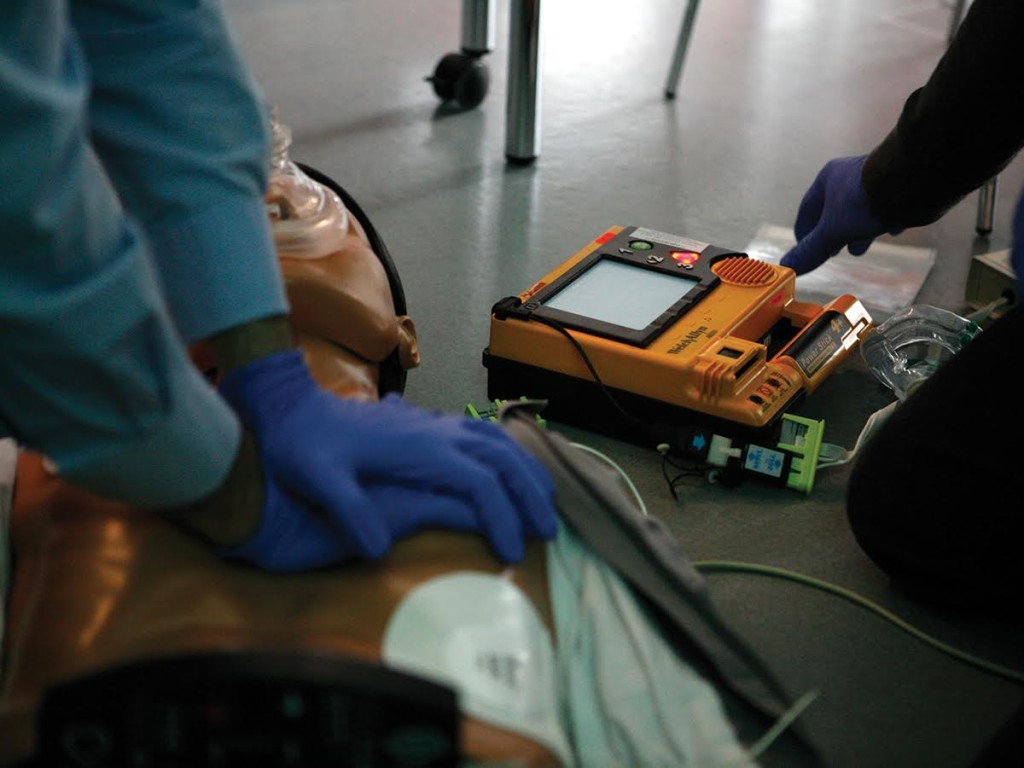
Effective at the start of the 2018-2019 academic year, most high school students in California will be required to complete CPR training in order to graduate. While usually involving mouth-to-mouth resuscitation, the new requirement will teach hands-only CPR. California will become the 37th state to add this requirement. In some cases, students will be taught to use an “automated external defibrillator,” or AED.
The potential to save a life should not be undervalued, however I fear that this new mandate will exacerbate the “bystander effect.” By definition, the bystander effect occurs when there is a large group of people witnessing the same emergency situation. A primary aspect of this theory is “diffusion of responsibility” or basically, “I don’t have to step in because someone else will.” In essence, this psychological effect can lead to inaction.
The chances that a high school student will need to use CPR while at school are slim. But let’s imagine that someone does need CPR. It’s lunch time in the cafeteria and you are with your friends, who also know how to use CPR. In fact, your whole class of 30 CPR-trained students is there. Someone is walking to a trashcan when they collapse to the floor. As people clamor around them, you hear someone exclaim that they aren’t breathing. You hesitate. “Someone else will do it,” you tell yourself. So you wait and your friends, they wait, and your classmates, they all wait too. Meanwhile there is someone who needs help, anybody’s help and soon. When someone finally does take action, it’s to alert a teacher; thus the students’ CPR training did no one any good.
When in high school, we don’t see ourselves as adults, so we look to authority figures — older adults — for help. Being relied upon to potentially save someone’s life is a big responsibility. High school being a period of our life when we don’t feel confident in being ourselves, it’s understandable why we wouldn’t feel confident in helping others.
As adults, we want to make the best decision. We know to call 911, but to perform CPR after all these years of nonuse, suddenly we revert to our 17–year-old or 18-year-old selves. Even though we were told otherwise, we can’t help but get nervous and think we might accidentally kill the person by pressing on their chest too hard. It’s been years, we wouldn’t even remember the symptoms that indicate someone is in need of CPR.
But the biggest reason not to have mandatory CPR training is possible resentment and an overall lack of seriousness expressed by those expected to learn. No one wants to be told to do anything. If you force teenagers to do something that they are almost certainly never going to use, they might only put in half the effort, especially if their only concern is passing the class. We could only hope the teacher would be able to emphasize the gravity of the training into each student, but with a class of 30 (or any other number that is not one-on-one), that might prove difficult.
Currently two states, Colorado and South Dakota, have laws in place where CPR training is recommended, not required. It is better to keep CPR training voluntary, for example as an elective, because it separates the students who think it might be useful one day from those who are only doing it for graduation. We can assume that the students that do sign up for the training plan on using it, or are at least willing to. They’ve designated themselves as leaders when the time comes.
CPR should be performed, however imperfectly, whenever needed because it buys more time for medical help to arrive. But if it comes to choosing between someone who reluctantly does it and someone who wants to do it, I will pick the person who wants to help, every time.








